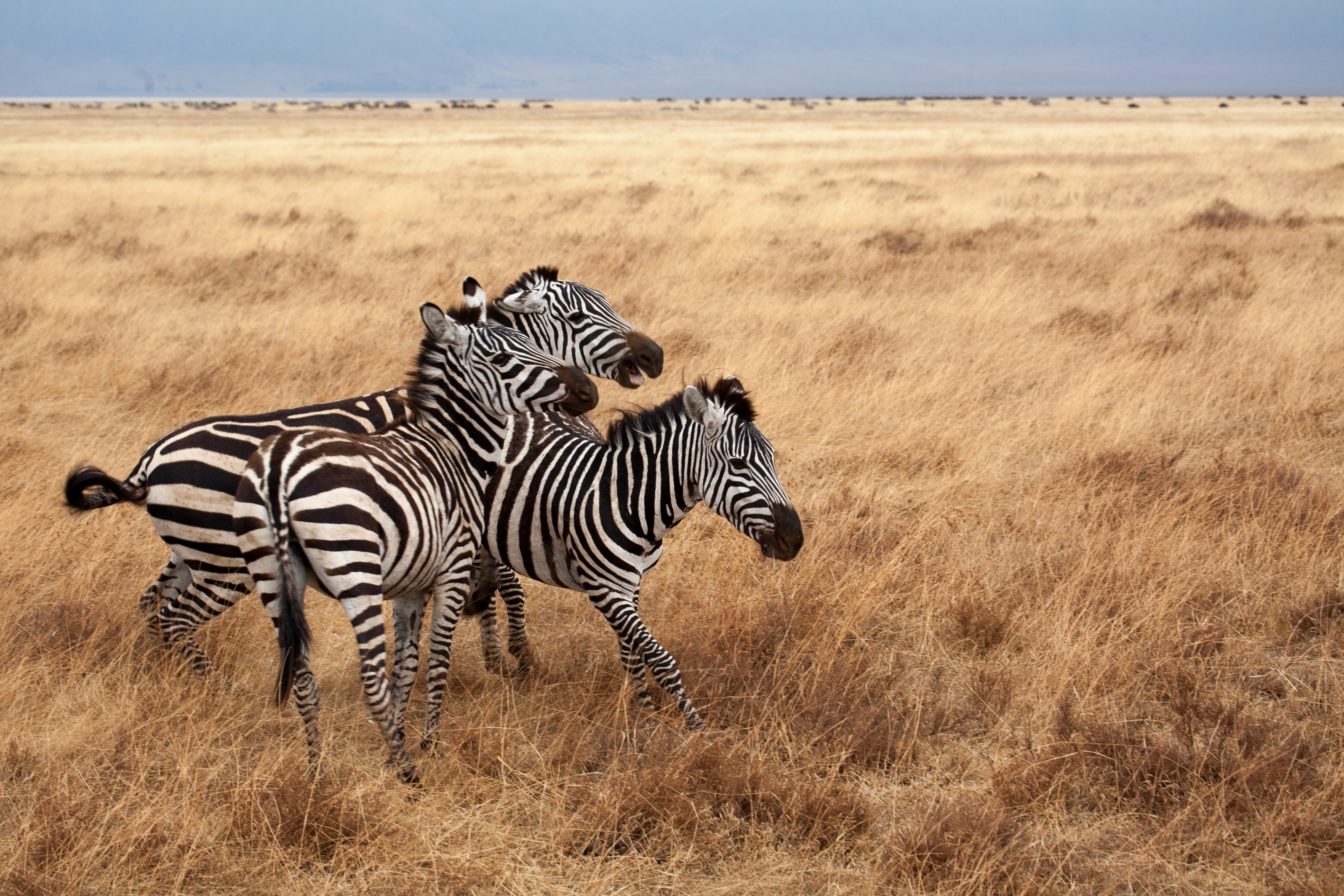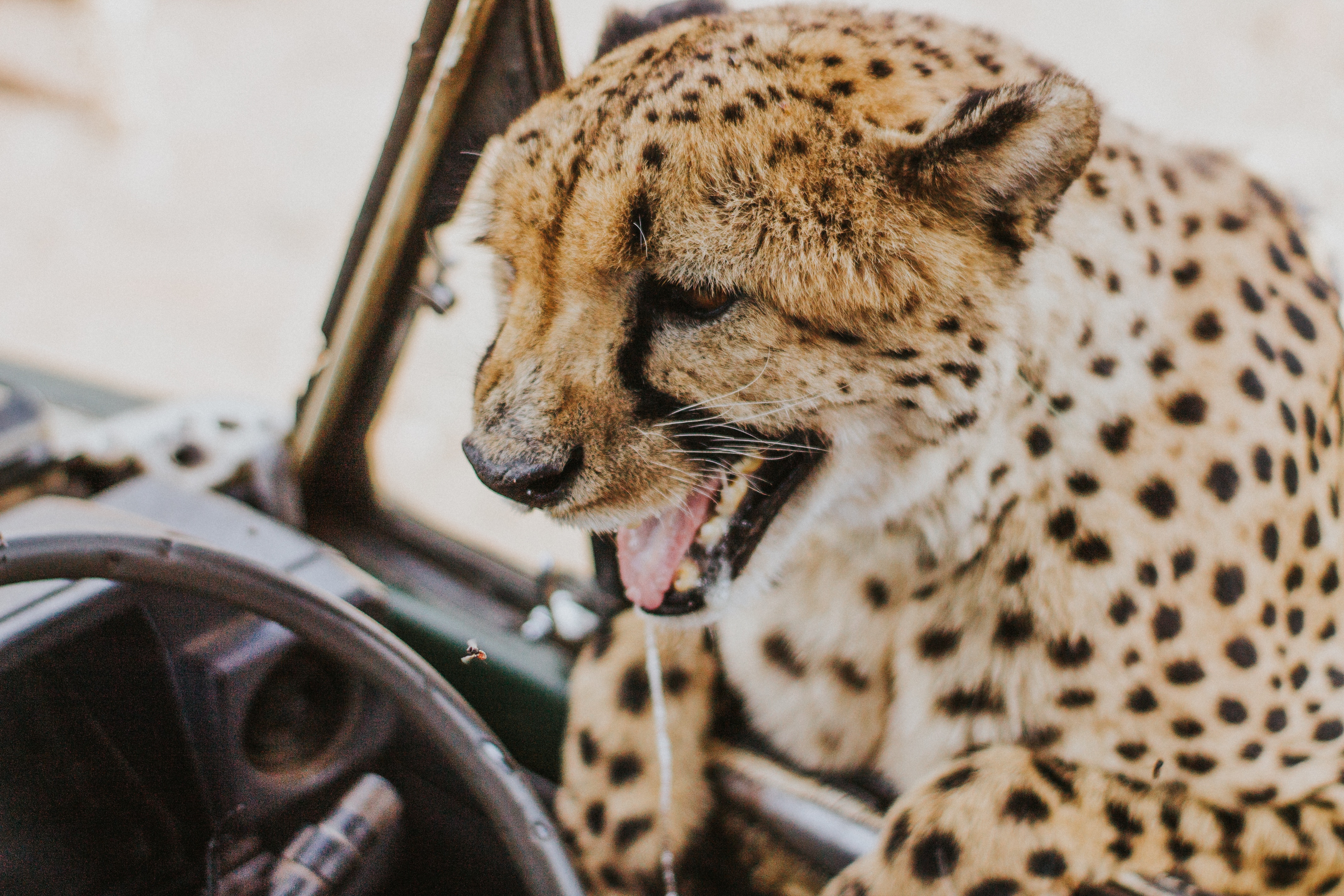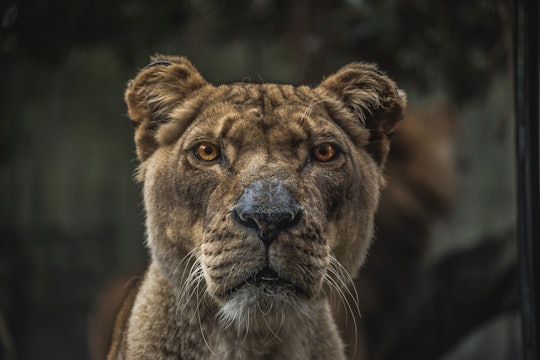Life on the savanna is a duel between agility and strength
Survival of the fittest evolves in the genes
Prey animals on the African savanna, like zebras and impala, live fast and die hard. As they graze quietly under the hot sun, they pause every so often to take stock of their surroundings. Their large eyes, located on the sides of their head for maximum visibility, peer out across miles of grassland, straining for any sight out of the ordinary. Their huge radar ears perk up at the crack of a snapped twig. Or a low, soft growl. Something isn’t quite right. The prey leap into an explosive, desperate run, and the hunt is on.
There is nowhere to hide on wide-open plains. The survival of pursuit predators, like lions and cheetahs, and their prey depends on their respective abilities to successfully chase down food and escape capture. Predator and prey are locked in an evolutionary arms race to be faster, stronger, and smarter than their adversary. And there is no other place where this plays out more dramatically than the African savanna, home of the fastest and most agile terrestrial animals on Earth.
A new study in Nature blends biomechanics, remote sensing data, and computer modeling to investigate the dynamics of this race, and how both animal performance and strategy influence the winners and losers in the hunt. It turns out that survival comes down to a duel between strength and agility – prey animals throttle the superior speed and power of their predators: though they run at a slower pace, prey's speed allows them to make unpredictable moves that make them more difficult to catch.
Hunting hunters (with tranquilizers)
To catch predators and prey in the act, Alan Wilson, a professor at the Royal Veterinary College at the University of London, and his colleagues went on safari in northern Botswana. They connected with experts from the University of Botswana and the Botswana Predator Conversation Trust to conduct fieldwork on two of the savanna’s more well-known predator-prey pairs: the fragile speedsters cheetahs and impalas, and the brawny lions and zebras.

They scoured the savanna by helicopter and by truck to find their animals, which all have overlapping ranges in northern Botswana. Once sighted, each animal used in the study was briefly sedated with a tranquilizer, and then fitted with custom, lightweight collars with a sophisticated GPS that allowed the authors to monitor the animal’s location, movement, and acceleration pattern down to a single stride. This meant the researches could literally track every step each animal made. They tracked nine lions, five cheetahs, seven zebras, and seven impala, and recorded an impressive, detailed data set of 726 high-speed runs for lions, 520 for cheetahs, 1,801 for zebras and 515 for impala. They used this information to track the top speed, acceleration, turning ability, and stride frequency (which determines how quickly animals can adjust their movement) of their prey-predator pairs.
While the animals were knocked out, the team also took a tiny biopsy of the hindlimb muscle. Biopsies were brought back to the lab in the UK, processed, and hooked up to a force transducer, which makes the muscles twitch and contract by sudden changes in temperature. A pressure transducer allowed the researchers to record information about muscle function, like how strongly and how quickly it could contract. The team used this physiological information to investigate the absolute limits of exercise performance in their study animals.
Animal Olympics
Lions and cheetahs were universally more athletic than their prey, the zebra and impala. Predator muscle fibers were able to deliver about 20 percent more power for a given muscle mass when contracting. This translated into not only higher top speeds, but also being able to accelerate and slow down much more quickly than their prey (37 percent and 72 percent faster, respectively). Because of their powerful muscles and claws, the big cats were also slightly (10-15 percent) more maneuverable than the zebras and impala.
While prey lack the outright talent of their pursuers, they have the advantage of a head start, and of setting the pace of the hunt by deciding when to speed up, slow down, or turn. Predators had to react and predict the decisions of their prey on the fly to close the gap and sink in their claws.

The model essentially calculated the probability of a prey animal escaping a predator over two strides by taking into account how far and fast each animal could move in any direction in a chase situation. A major assumption was that the predator’s first stride was always used to move forward towards the prey. The calculations for each stride could be sketched as clouds or bubbles on a grid (with the starting location of the animal in the center). The more the bubbles of the predator and prey overlapped by the second stride, the more likely it was for the prey to be captured.
Surprise the lion
When outmatched for power, the best strategy is to be unpredictable – being able to precisely turn, speed up, or slow down. Sprinting in a straight line was a bad tactic because predators can easily outpace their prey, and high speeds make animals less maneuverable, because they skid and have to use more force to re-orient their body. Runs where the prey turned quickly (taking advantage of the fact that they almost matched the cats in maneuverability), and ran at a moderate speed produced the least amount of overlap between prey location and the predator “strike zone.” On the other hand, predators are most successful when they ran just a bit faster than prey, so they keep as much of their maneuverability as possible to react to prey decisions.
In both cases, the athletics of each member of the predator-prey pair was closely matched, highlighting the strong evolutionary pressure for performance in both predators and their prey - there is an arms race for improved locomotion ability in large carnivores and their large herbivorous prey. Beyond the ecological and evolutionary implications, this study also breaks technological ground with the sheer complexity and size of its data set. Such detailed information could be applied to how animals deal with other real-world issues in their environment, like when and how they forage for food, or what kind of snap decisions are required on a daily basis to flee predators or environmental challenges.



This study is wild and incredibly clever. I’m wondering about those calculations for muscle capacity – is that the standard way of measuring muscle strength and such? Also, it must matter how much weight these animals are carrying around, right?
I also think it’s interesting to consider other biological differences beyond muscle strength. Antelopes have remarkable capacity for aerobic exercise and can regulate their temperatures over long bouts of running (e.g. Lust et al., 2007). And although it used to be a myth that cheetahs would overheat during hunting, it turns out that they too are great at maintaining a steady body temperature (Hetem et al., 2013).
As a neuroscientist, it’s fascinating how the brain’s ability to make decisions and guide movements is all evolving in tandem with changes in muscles, thermoregulatory systems, and more. So, I think I should probably switch to studying cheetahs – you know, for the sake of my field.